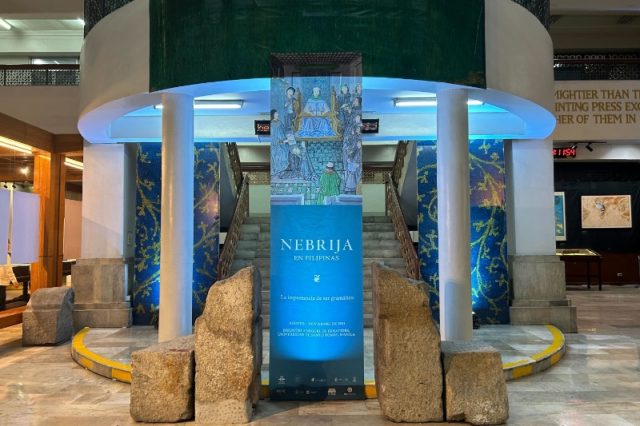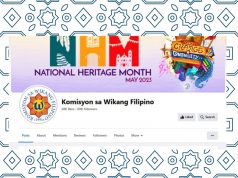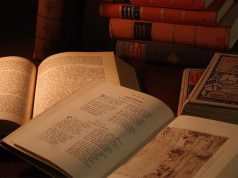
Works of a renowned Spanish grammarian would help researchers at Komisyon sa Wikang Filipino (KWF) to study and flourish the languages in the country, the KWF commissioner said.
Antonio de Nebrija’s creations, which contributed to the country’s linguistic history and inspired other works of missionary grammar and vocabulary for native Philippine languages, are being showcased at the “Nebrija en Filipinas” exhibition at the University of Santo Tomas (UST).
KWF commissioner Arthur Casanova stated that the dictionaries and the grammar printed for the “Nebrija en Filipinas” exhibition could serve as “good start” on studies about the country’s native languages.
“Every month, our researchers are going everywhere in the far-flung places in the Philippines to be able to do good researches, so that we can report to the Philippine nation that the Philippines is rich in languages,” Casanova said.
“It’s so nice to […] make use of these books, printed dictionaries, and grammars for our future studies,” he added.
According to Casanova, the commission has been using Nebrija’s works to study Filipino languages.
Recently, they added and published 10 new orthographies, or the study of the conventional spelling system of a language, to “improve the list of our number of languages in the Philippines.”
However, their studies in the past decade also showed that 40 out of 135 native languages, including the Filipino sign language, were endangered.
“Around 40 of these native languages […] were in danger simply because there are communities in the Philippines that speak native languages that are having small populations of speakers,” the KWF commissioner said.
“We learned that 5 of these endangered 40 languages have died,” he added.
Meanwhile, KWF has been publishing and revising books on grammar and Filipino and Filipino-English dictionaries, which were both currently available online, but its physical copies would be finished by December this year.
The commission has also been building bahaywika, or language houses, since 2017 in some areas, including Abukay, Bataan; Baler, Aurora; and Cadiz, Negros.
While highlighting that most Filipinos are multilingual, Casanova also stressed that they should use the Filipino language as it is the “symbol of our identity.”
“That shows that our culture is really very rich because we have different languages, different cultures, but we are one race,” he said.
The UST Miguel de Benavides Library and Instituto Cervantes organized the “Nebrija en Filipinas” exhibition in collaboration with several institutions, including the Embassy of Spain in the Philippines, the Antonio de Nebrija Foundation, the Spanish Agency of International Development Cooperation, and the National Library of Spain.
The exhibition opened last August 22 and will run until November 22 this year at the UST Miguel de Benavides Library.






